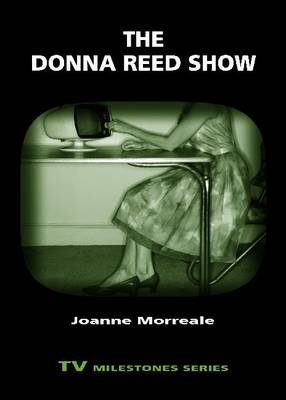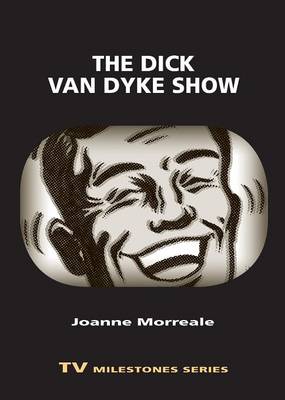TV Milestones
2 total works
At a time when television offered limited opportunities for women, Donna Reed was an Oscar-winning Hollywood actress who became both producer (though largely uncredited) and star of her own television show. Distinct from the patriarchal family sitcoms of the era, The Donna Reed Show’s storylines focused on the mother instead of the father, and its production brought a cinematic aesthetic to television situation comedy. In The Donna Reed Show, author Joanne Morreale illustrates how the program pushed the boundaries of the domestic sitcom at a time when the genre was evolving and also reflected the subtle shifts and undercurrents of unrest in the larger social and political culture.
Morreale begins by locating Donna Reed in relation to her predecessors Gertrude Berg and Lucille Ball, both of whom were strong female presences in front of and behind the camera. She also explores the telefilm aesthetics of The Donna Reed Show and argues that the series is a prime example of the emergent synergy between Hollywood and the television industry in the late fifties. In addition, Morreale argues that the Donna Stone character’s femininity acts as a kind of masquerade, as well as provides a proto-feminist model for housewives. She also examines the show’s representation of teen culture and its role in launching the singing careers of its two teenaged stars. Finally, Morreale considers the legacy of The Donna Reed Show in the representation of its values in later sitcoms and its dialogue with contemporary television texts.
Morreale illustrates the interplay of gender, industry, and culture at work in the history of this classic TV series. Fans of the show, as well as students and teachers of television history, will enjoy this close look at The Donna Reed Show.
Morreale begins by locating Donna Reed in relation to her predecessors Gertrude Berg and Lucille Ball, both of whom were strong female presences in front of and behind the camera. She also explores the telefilm aesthetics of The Donna Reed Show and argues that the series is a prime example of the emergent synergy between Hollywood and the television industry in the late fifties. In addition, Morreale argues that the Donna Stone character’s femininity acts as a kind of masquerade, as well as provides a proto-feminist model for housewives. She also examines the show’s representation of teen culture and its role in launching the singing careers of its two teenaged stars. Finally, Morreale considers the legacy of The Donna Reed Show in the representation of its values in later sitcoms and its dialogue with contemporary television texts.
Morreale illustrates the interplay of gender, industry, and culture at work in the history of this classic TV series. Fans of the show, as well as students and teachers of television history, will enjoy this close look at The Donna Reed Show.
The Dick Van Dyke Show (CBS 1961–1966) was a uniquely self-reflexive sitcom that drew on vaudevillian tropes at a time when vaudeville-based comedy variety was disappearing from television. At the same time, it reflected the liberal politics of the Kennedy era and gave equal time to home and work as it ushered in a new image of the sitcom family. In The Dick Van Dyke Show, author Joanne Morreale analyzes the series’ innovative form and content that altered the terrain of the television sitcom.
Morreale begins by finding the roots of The Dick Van Dyke Show in the vaudeville-based comedy variety show and the “showbiz” sitcom, even as it brought notable updates to the form. She also considers how the series reflects the social context of Kennedy’s New Frontier and its impact on the television industry, as The Dick Van Dyke Show responded to criticisms of television as mass entertainment. She goes on to examine the series as an early example of quality television that also pointed to the complex narrative of today, examining the show’s progressive representations of race, ethnicity, and gender that influenced the content of later sitcoms. Morreale concludes by considering The Dick Van Dyke Show’s afterlife, suggesting that the various reappearances of the characters and the show itself demonstrates television’s “transseriality.”
Fans of The Dick Van Dyke Show and readers interested in American television and cultural history will appreciate this insightful reading of the series.
Morreale begins by finding the roots of The Dick Van Dyke Show in the vaudeville-based comedy variety show and the “showbiz” sitcom, even as it brought notable updates to the form. She also considers how the series reflects the social context of Kennedy’s New Frontier and its impact on the television industry, as The Dick Van Dyke Show responded to criticisms of television as mass entertainment. She goes on to examine the series as an early example of quality television that also pointed to the complex narrative of today, examining the show’s progressive representations of race, ethnicity, and gender that influenced the content of later sitcoms. Morreale concludes by considering The Dick Van Dyke Show’s afterlife, suggesting that the various reappearances of the characters and the show itself demonstrates television’s “transseriality.”
Fans of The Dick Van Dyke Show and readers interested in American television and cultural history will appreciate this insightful reading of the series.

